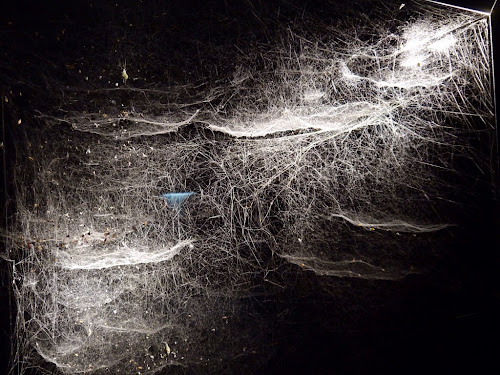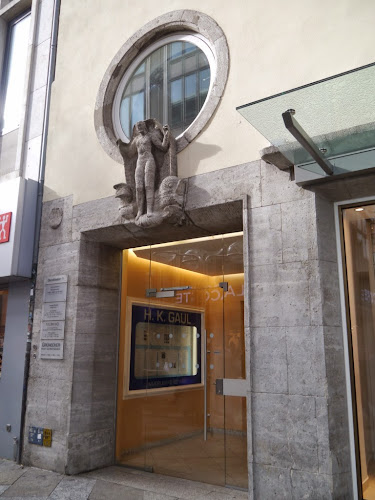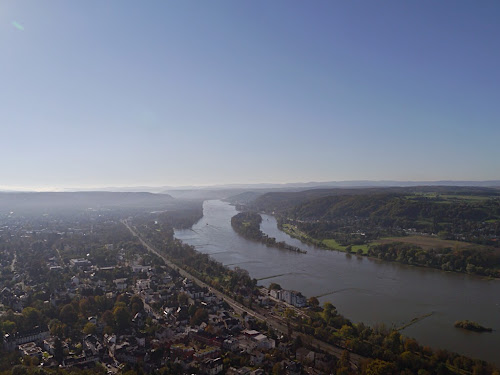An uneventful trip bact to Düsseldorf from Barcelona, another day there relaxing a bit and doing some cycling along the Rhine. Then off to Köln, aka Cologne, to visit a family connection, Robert and Erika Wagner.
Robert's grandmother worked for my mother's family, the Goldschmidts, in Köln when my mother was born and we had connected with them when my brother and sister and I went to Europe years ago. Robert is a retired teacher and both are historians, founts of information about the local as well as global history. They've had a particular interest in retrieving local history, specifically about the Jewish population that lived in the area prior to WW2. That was the point of connection with my family, they being Jews on my mother's side. Amazing fast train trip to Köln. Met up with Robert and Erika in the train station in Köln and we went on a little walking tour in part of the old town, saw some of the Roman antiquities and historic buildings including the jewelry shop owned by my mother's family at the turn of the 19th century, #1 Domkloster, a most prestigious address directly across from the massive cathedral that Köln is so well known for.
Then went for one of those big German meals, schnitzel and beer for me. It was turning out to be a warm, sunny day and Robert led us across one of the bridges over the Rhine to a newer part of town where it was now time for a coffee.
Then up to the top of a big new building, maybe 30 stories, for some fabulous 360 degree views, back down and across another bridge.
On this bridge there were thousands of locks attached to the mesh barrier, put there by couples to signify their union. Apparently they do this in other places and in Berlin they've removed them for fear that the added weight on the bridge would be dangerous.
That was all the time I had for our visit but Robert suggested an outing on the following Sunday.
The trip back to Düsseldorf was anything but smooth. The train station in Köln was a madhouse full of stressed travellers anxiously awaiting news about the impending rail strike. Got my train and though it wasn't crowded, it turned out to be the milk run and the trip that took about 20min going, took over an hour coming. Then I got completely turned around in the train station in Düsseldorf, waited a long time for a train, then got on one going the wrong direction. When I surfaced at what I thought was the right subway stop, nothing looked familiar and I knew I was in trouble. But, ta da, I had my iPad with me and, with the help of Google maps, I found my way back to the train station and the right subway home. Ahhh.... travel.
A word about the bike sharing system in Düsseldorf, Nextbike, that is used in much of Germany and maybe other places, I don't know. The bikes are locked up with a combination lock at designated stations and are numbered. You use a smart phone to call the bike number in, the combination for the lock is relayed to you and off you go. It's a lot less infrastructure than the type of system in Mexico City or Barcelona but necessitates having a smart phone. As with any internet dependent application, it's subject to glitches and there is the cost of the phone but the other type of system is subject to problems too.
On Saturday Jim and I cycled, me on a Nextbike, to a most unusual art installation at the Kunstsamlung, what was formerly seat of the Parliament of North Rhine-Westphalia the seat of congress, now an art museum.
The installation was In Orbit by Tomàs Sarceno from Argentina and consisted of three levels of wire nets suspended from huge inflated PVC spheres, 8.5m in diameter hanging 25m above the floor. You dress up in an overall-like suit and go out on the mesh that gives beneath your feet and is not for those who might have an issue with heights. A very strange sensation looking down through the mesh to the floor far below.
 Apparently this installation is inspired by spider webs like this one created by very small spiders.
Apparently this installation is inspired by spider webs like this one created by very small spiders.
Later that day, Jim and Heike took me to the Museum Insel Hombroich, an immense art park outside Dusseldorf. Using Heike's car share membership, I got my first ever ride in a BMW and we zipped off down the Autobahn at 180, cars passing us like we were standing still. The art park was an amazing facility created when real estate agent and art collector Karl Heinrich Müller purchased Rosa Haus ("Pink House"), an overgrown industrialist's villa with garden, which was built in 1816. Müller's intention was to support local artists and architects. Landscape architect Bernhard Korte, who was commissioned to redesign the park, restored the old gardens and created minimalist landscapes. From 1982 to 1994 sculptor Erwin Heerich created eleven exhibition pavilions, which Müller called "chapels in the landscape". Heerich's elemental sculptures became the design base for these gallery pavilions. It covers 62 acres of beautiful restored land with trails winding through forests, around ponds and interspersed with very plain, windowless brick buildings,
some that displayed art, some that were only there for their acoustic qualities, some that were empty. The displays were a mishmash of antiquities and art from all over the world, modern art, ancient archeological pieces, art from all different eras, all unlabelled. It was a beautiful, warm day and we had lunch outside, wandered from one building to another on the unmarked trails, encountering surprises around every bend in the trail: unusual art installations, ponds full of carp, artists' studios.
And that was only the half of it. In what had been an American missile base across the highway, there was more of this art park. But first, coffee and cake, sitting outside in the sun.
A stunning museum designed by the noted Japanese architect Tadao Ando housed an interesting exhibit of Japanese art, 30m long scrolls and large triptychs depicting scenes of life in ancient Japan.
This site also contained a number of brick buildings dispersed around the site, in a uniform style, some of which were housing for artists and poets in residence, one, a sort of monastery with cells and places of worship. This was a most unusual complex. I've never seen the like.
Sunday was another day with the Wagners. Robert came to pick me up and we drove back to his place to pick up Erika after which we proceeded south along the Rhine, past Bonn to the little town of Bad Honnef. From there we hiked up to the ruins of an old castle and modern hotel where there were great views down to the Rhine and surrounding countryside.
A cog railway served this site but we opted to walk down through lovely forest, stopping at a restaurant for another of those big German lunches: wurst and potatoes and beer. I'd been curious about the curry wurst that you see all over Germany so I ordered one. A most memorable experience but, I'm sorry to say, not in a positive sense. A mushy sausage covered in warm ketchup with a bit of curry powder sprinkled on it, a huge mound of soggy French fries and a token bit of cabbage salad. I've never encountered anything like this restaurant there in the middle of the forest, no car access to it but thronged with people out for a Sunday walk, chowing down on wurst and swilling beer. On down the hill after lunch, stopping at the grave of Konrad Adenauer, first chancellor of Germany after the war, and on to the car for the drive back to Robert and Erika's house (at 200kph at times!). They live in the small town of Rösrath about 20min from Cologne in a very large (7 bathrooms), book filled house mostly built by Robert. We sat out in the warm afternoon sun on the balcony with coffee and ice cream and sweets and chatted about family. A lovely day with wonderful, generous people, a drive back to Düsseldorf and bed.




















No comments:
Post a Comment